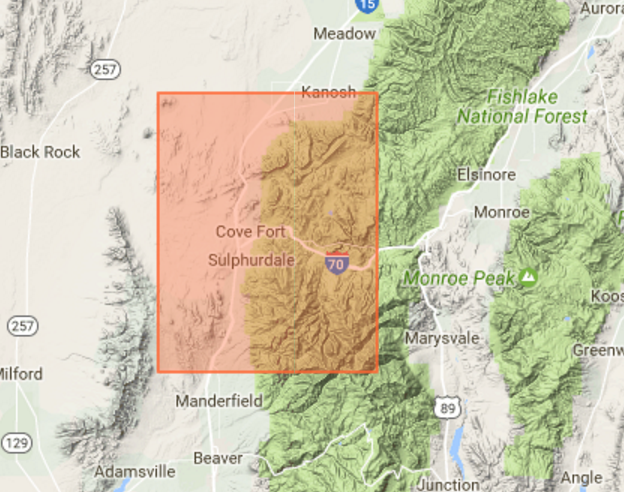
ST. GEORGE – A plant in Cove Fort is the first in the world to combine hydroelectric and geothermal technologies in one commercial power generating facility.

The Cove Fort facility has started full operations of the hybrid geothermal-hydroelectric process at the plant, which already powers more than 13,000 households.
The power plant is operated by Enel Green Power North America Inc., a subsidiary of Italian multinational renewable energy corporation Enel SpA.
“The operation of this technology, a world’s first, is a major milestone for the geothermal industry and a reinforcement of our commitment to innovation and energy efficiency,” Francesco Venturini, head of Enel’s Global Renewable Energies, said in a statement.
“We are creating innovative solutions that are making renewable energy better, stronger and smarter. As a result we have once again discovered a more resourceful way to maximize plant operations and power generation with the aim of using this technology at our facilities around the world.”
The company added “fully submersible downhole generator technology” to a geothermal injection well, combining geothermal and hydroelectric power at one site.
The new generator technology increases the plant’s efficiency by capturing the energy of the water flowing back into the earth to produce additional electricity.
“The result is a first-of-its-kind innovation that can reduce operational and maintenance expenses, while also having the potential to generate additional revenues,” company officials said in a press statement.
A test of the new system during late summer 2016 showed that the new hydro generator increased overall output by 1,008 MWh during July, August and September. The increase offset the energy consumption of the Cove Fort plant by 8.8 percent, thereby improving the plant’s operational efficiency.

With a capacity of 25 megawatts, the Cove Fort facility began operations in 2013. It generates up to 160 gigawatt-hours of electricity each year, powering more than 13,000 U.S. households while avoiding the annual emission of about 115,000 tons of carbon dioxide into the atmosphere.
The Cove Fort/Sulphurdale geothermal resource area spans Millard and Beaver Counties, according to information from the World Geothermal Congress.
After geological studies found the potential to generate geothermal energy in the area, several concessions were granted to different companies in the early 1970s. Four exploration wells showed the existence of a resource at 350 degrees Fahrenheit at 5,200 feet below the surface.
Enel was first granted approval by the Bureau of Land Management for the use of six existing geothermal production wells and three existing water injection wells on 50 acres of BLM-managed land.
In 2015, the company proposed an expansion. A finding of “no significant impact” was published by the BLM after an environmental assessment of the Cove Fort II geothermal exploration project.
The project proposed the drilling of six more geothermal exploration wells along with supporting delivery pipelines and access roads across BLM and U.S. Forest Service land.
Cove Fort is Enel’s second hybrid power plant to begin operations in the United States. The company also operates the award-winning Stillwater facility in Fallon, Nevada, which uses a unique combination of geothermal and solar technologies.
Enel operates in 23 U.S. states and two Canadian provinces with more than 2.5 gigawatts of installed renewable energy capacity using wind, solar, geothermal and hydropower sources.
Email: [email protected]
Twitter: @STGnews
Copyright St. George News, SaintGeorgeUtah.com LLC, 2016, all rights reserved.
This is absolutely fantastic news and I’m sure this will result in a positive reaction from the community and I would like to thank all those involved in making this possible